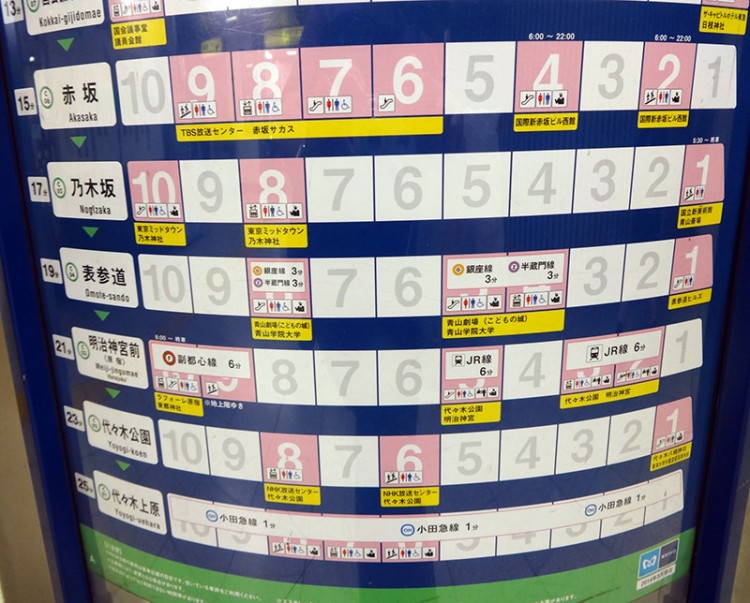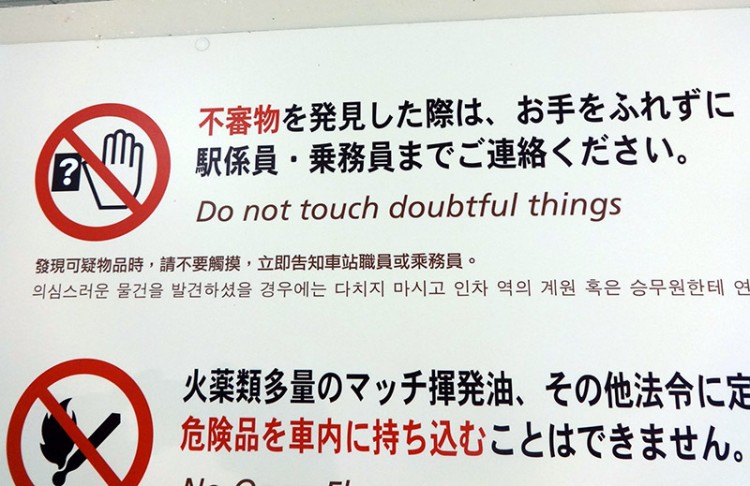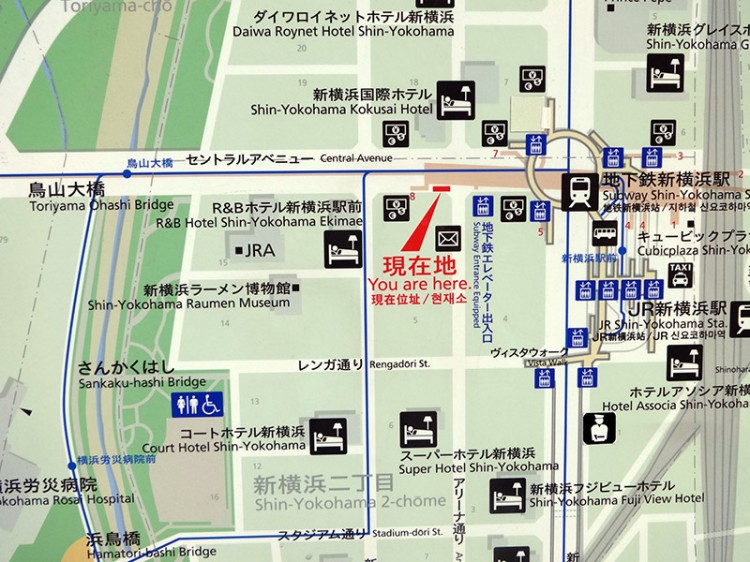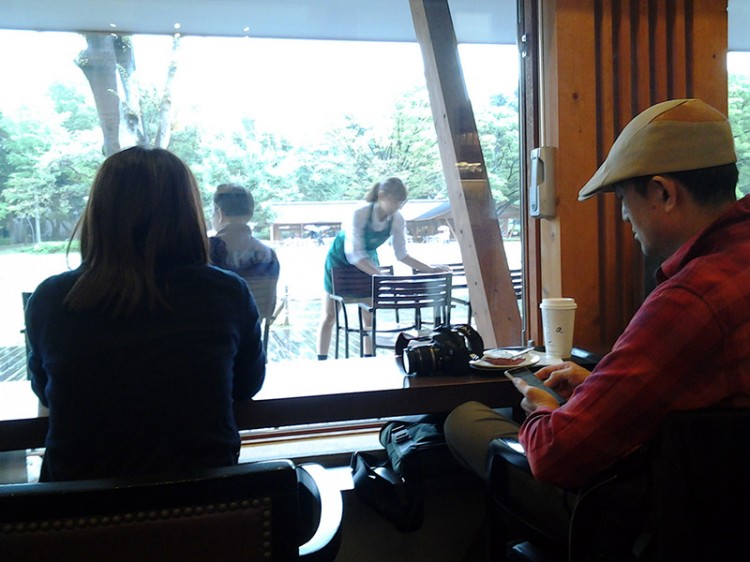The first time I went to Japan was because I was invited to a conference. Despite studying the language and being interested in the food, gardens, and culture, I'd never had the nerve to plan my own trip. I was terrified of flying, but I managed it, and the experience was so awesome that I said, "I'm going back next year!"
Ten years later, I noticed that my passport was about to expire, and I'd never been back. Oops.
That inspired me to get off my butt and plan a trip. My fear of flying, and some of my Japanese, had faded over the years, but I made it and had an awesome two weeks. I swore I wasn't going to let ten years pass before I went again. I went back the following year, and then this year too!
I'm not going to lie, going to Japan is stressful. I'm not the kind of person who rolls with the punches or craves spontaneity. I'm a nervous person, the kind who wants a Plan C, just in case my Plan B doesn't pan out. And the thing is, even in a place where you speak the language, it can be hard to find your way around an unfamiliar city. Luckily, over the past three years I've gotten comfortable with a lot of things I used to find horribly nerve racking. If you're like me, you might find some use in what I've figured out.
Trains

I feel confident in saying that Tokyo has the most amazing subway and train system on earth. Yes, okay, I haven't traveled to that many places, but I was born and raised in New York. If their system is more complicated than that, it's enough for me.
This is one of the things I love most about the city. However, it can be overwhelming even to this native New Yorker because some things just happen to work differently. Here are some things you should know.
"Transfer" Can Mean a lot of Things
Sometimes when it looks like you can change from one train or subway line to another on a map, this means you just cross the platform or go up or down one flight of stairs. That's what someone like me would normally expect.
But sometimes you'll be surprised to find that you have to pay the fare to exit the station, go outside, and enter another station. And sometimes that's actually closer than a transfer within the same station. I've had to walk about 500 meters before, which is about 1650 feet, and it felt like about six freaking blocks. Seriously, to me, that does not count as the same train station.
This leads me to an important tip…
Use the Maps in the Stations
There are two kinds of maps/diagrams that you'll find in many, if not all, stations.
One is a map of the station itself, like the photo above. You will want to check this out. Even in a small station, there are usually exits on both ends of the train, which can be many blocks apart. Great for the locals who thereby have an entrance closer to home; not so great if you've randomly walked a long way to one exit to find you're at the wrong end and have to walk the whole distance back and then some. I love to walk, but, A, the weather in Tokyo is often something you want to minimize contact with and B, you're more likely to get lost on the street. Don't ask me how I know.
In large stations, you really need to check the map. Exits even farther apart in the stations that serve as major transfer points. If you're changing trains, don't expect to find your train by walking around randomly.
The other awesome poster that I learned to decipher on my last trip – one of the few common informational signs in Tokyo that isn't bilingual – looks like this:

This one tells you what car you want to get on to make your trip the most efficient. You can look up your exit station and it will tell you what car is nearest your transfer point and how long the walk is. (It might take you a bit longer than what the sign says if you aren't used to the walk.) You can also compare the walk time if there is more than one transfer point. This can save you hundreds of meters of walking.
Let's take a closer look at the line labeled 21, close up.

You should be able to tell that if we want to change to the line symbolized by the letter F in a rust-colored circle, we need to get in car 9 or 10. When we get off it will be a six minute walk. If we want to change to JR, we need to get in car 2, 3, or 5. When we get off it will be a six minute walk as well.
Sometimes there's more than one option for changing between certain lines, but the amount of walking to transfer can be quite different, making this information very useful. You can also see from the icons that at car 5 you'll have to take an escalator but at cars 2 and 3 you'll be near an elevator, useful to know if you're toting a lot of luggage.
There's even more info there if you can read Japanese, of course, but there's a lot you can get out of it even if you don't.
On the other hand, as far as maps go, let me warn you:
Don't Believe the Train System Maps

That's the Tokyo Metro map. Looks like it has all the trains anyone could need, right? Au contraire. I don't think any one map you see contains every possible train. It's probably impossible. There are at least two major companies in Tokyo, JR and Tokyo Metro, not to mention the many other independent companies, running intersecting train systems.
Because it's all too much for one map, the maps can be misleading. This one has some non-Metro lines on it, but only a few of the stops on them are indicated. During one outing I went from 10 to 2 the long away around because the one stop that was crucial to me realizing that I could go a shorter way isn't indicated on this map. It also doesn't have the other main system, JR, included on it in any useful way.
There is an amazing app that helps people plan their trips – it gives you transfer points and even which trains to get on down to the exact minute, because you can do that in Tokyo. This is useful if you are going somewhere off the beaten path and your trip looks like it will need more than one transfer. If you have Japanese friends or hotel staff that can help, get them to use the app to find the shortest route. Or you can use the English version available for the Tokyo Metro. It doesn't look like it includes every other train line, but should help.
I also recommend: trust but verify. The maps and diagrams in the stations do have awesome detail but I always made sure to ask if the train would be stopping at the stop I was going to, even if it seemed obvious. There are lots of lines with more than one type of express that skip different numbers of stops, and your stop might be one of them. Once I was told, "you have to change because the local doesn't stop there, only the express does." Seems impossible by definition, but it turned out to be true.
Finally, while I mostly take Tokyo Metro for my own convenience, I will note that JR can be preferable because, instead of being underground, you will have a view. For my first trip, I decided I'd only go places on the JR Yamanote Line, which goes in a circle around the city. I figured that way I'd always eventually get where I was going, even if I went the wrong way or missed my stop.
When we talk about trains this leads directly to…
Language

In Tokyo, English is everywhere… until it isn't.
The way English permeates Japanese culture is kind of weird if you think about it. Major companies like Japan Rail and the national broadcaster NHK use the Latin alphabet for their logos, and it's not uncommon to see stores with names written in English with no Japanese along side. It's as if Amtrak wrote its name in Cyrillic characters on their trains. There are a lot of conversations that could no doubt be had about this, but never mind that for now. On the surface, this abundance of English it's a lifesaver for an English speaker. You just can't get lulled into a false sense of security and count on it always being there for you.
The one place you can pretty much count on English is on the trains. Signs are all in kanji, kana, and English/romaji. Most trains also have electronic displays telling you what station you're arriving at and bilingual recorded announcements of the same.
This is only true in the city though. Even stations at the edges of your Tokyo Metro map may have less English signage. Train lines that you've taken many times and that reliably have bilingual signs announcing the stations may suddenly stop providing them. Sometimes commuter trains that come in from way out in the sticks share the tracks and then run local. They won't have the English you're used to. I always find this unnerving, but don't panic, really, you can read the sign when you get to your station and you'll still have plenty of time to get off.
Also, the conductor's live announcements are always in Japanese. Usually, he's just saying vacuous comments like, "Welcome, thanks for riding!" and, "Don't leave your bags behind when you get off." But if he was announcing there was a breakdown or something, I'd be out of luck. To comfort myself, I always think of this thing that happens in New York City all the time when the conductor suddenly announces that the local train you're on is going to skip all the stops to 125th street. The thing is, half the time the sound system is so bad that you can't understand what he's saying even though he's speaking your native language. So being in Tokyo isn't really much different. You can survive a missed stop or a missed announcement just like you would back home.
English on the Street

In case you don't already know this, let me just be clear: Just because Japanese people study English in school does not mean they all speak or understand it. Of course there are many, many more people who can use a little English in Tokyo than there are people who can Japanese in, say, the United States. But you should not rely on finding one to make it to your destination.
Because of this, tourist maps written completely in English are practically useless. You won't be able to ask anyone the way by pointing to your map. They won't know what it says. Get a bilingual map whenever possible.
Speaking of street maps, most neighborhoods have awesome maps on big boards on the side of the road where you get off the train and often elsewhere. As you see from the photo above, these are bilingual. Thank you, Japan.
Finally, even if you haven't studied Japanese, from my awkward experience, I recommend you take a look at the following:
99% of the time restrooms are labeled in a way you can understand, either in English or with illustrations. 1% of the time your friend will take you to a fancy restaurant where you better know the kanji for "man" otoko 男 and "woman" onna 女.
"Flush" 流 is also useful, so you don't accidentally push the emergency call button in a public toilet in an out-of-the-way train station. Don't ask me how I know.
Speaking of toilets, everyone tells you about the squat toilets and the high tech ones with heat and built in bidets. No one seems to tell you that many toilet handles gives you a "small" shou,ko 小 and "large" dai,oo 大 flush option labelled only in kanji. Sometimes they don't even have handles, just buttons with those characters on them. This is to deal with either number 1 (小) or number 2 (大). You're welcome.
Assorted Practical Details

WiFi
If you're American and you live in near a city, free wifi might be something you're used to. This is not a common thing in Japan. There are many wifi hotspots, but people log into their own service providers. Since you don't live in Japan, you probably don't have your own account with a provider, so these are useless to you.
This is is one of the big things foreigners complain about. There's been progress even in the year since my last trip, but while there are more options, they are all still pretty complicated. You can rent a smartphone, rent a portable wifi router, or download an app just for tourists that lets you access certain tourist-only hotspots for two weeks. (Actually, Tofugu wrote a gigantic post detailing every last one of the best pocket Wi-Fi and Internet options in Japan.) There are also spots that offer wifi, but you have to enter all kinds of information to basically sign up for an account on the spot.
You can learn more about these online, but be sure to make arrangements in advance. If you don't, I have one word for you: Starbucks. Much as I hated the idea of spending my precious time in Japan in an American chain, sometimes when you're exhausted there's nothing more comforting than a nice Starbucks with the closest thing you're going to get to American-style wifi. To use it, you just need to log into your Google account or some other popular service. And, really, just look at the photo above of the view from the lovely Starbucks in Ueno Park. Don't you want to be there right now?
Sanitation
Trash cans are as rare as unicorns. They are also really complicated. Be prepared to carry your trash with you for a long time.
Paper towels and napkins are rare. Japanese ladies carry a small hand towel, which is also useful for sweat when the weather is hot. It's a bit of a pain, but since there's no place to throw stuff away, it's a good idea to carry one.
Nice restaurants give you one of those rolled-up moist washrags before the meal, but informal places will give you a wrapped wet-wipe. If you don't use it right away, keep it. Same for the tissues you'll see handed out with ads at train stations and on the streets. They come in handy.
Climate
Tokyo is essentially a tropical destination. This has some practical ramifications.
There are entire stores that sell only umbrellas. There are channels along the stairs in every Metro station to drain water. These small details should be obvious warning signs. There's always at least one day of my trip where I regret not bringing waterproof shoes.
The summer is hot and humid enough to kill you, seriously, and I say this as someone who lives in Washington DC. Even in October there will be days when you will still be able to wear a t-shirt comfortably. A tour guide once told me that the leaves don't start to change to fall colors until December.
In general, Japanese people seem to be much more tolerant of discomfort than typical Americans, so unless you're in a hotel room where you control the temperature, the indoors will probably always be too hot or too cold. Also, air conditioning can sometimes seem like a purely theoretical notion compared to the way it's used in the US.
Finally, and once again for the Americans…
Keep Left!
You may think you don't need to worry about this crazy driving-on-the-left thing because you won't be driving, you're going to the city with the most awesome public transit in the world after all. Sorry to burst your bubble.
First of all, don't forget to look to the right first when you cross the street. You're going to forget this sometimes in your jet-lagged state so I can't emphasize this enough.
Second, people don't just drive on the left, they walk on the left too. If you're headed straight for someone walking towards you, you might instinctively step to the right to avoid them, which won't help when they instinctively step to their left. To avoid head-on sidewalk collisions you need to swerve the opposite direction from what comes naturally.
When going up and down stairs and in crowded train passageways people also walk to the left. Except, of course, when they don't. You will randomly come across stairways explicitly labeled "Keep Right Here" for no reason I could ever figure out. I can only assume that they're trying to keep us tourists just a little off-balance, because in the end, what's the point of flying to the other side of the planet if you don't get pushed out of your comfort zone a bit?
That's all I have for now. Perhaps I will learn something new the next time I go back. If I do, I'll be sure to let you all know.
Do you have any Tokyo travel tips of your own? What about the rest of Japan? And is there anything you felt like a genius for figuring out? Share in the comments!
